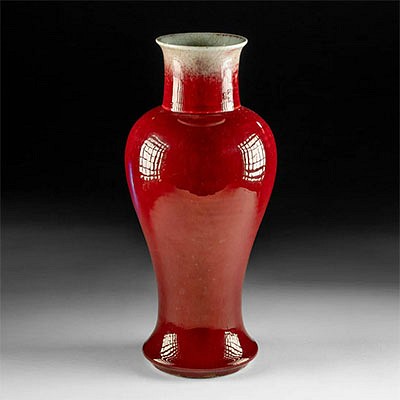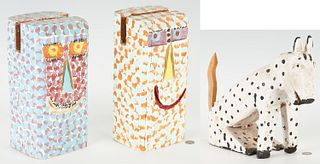2nd C. Gandharan Buddhist Aligraphic Stone (from Stele)
Lot 110
About Seller
Artemis Gallery
686 S Taylor Ave, Ste 106
Louisville, CO 80027
United States
Selling antiquities, ancient and ethnographic art online since 1993, Artemis Gallery specializes in Classical Antiquities (Egyptian, Greek, Roman, Near Eastern), Asian, Pre-Columbian, African / Tribal / Oceanographic art. Our extensive inventory includes pottery, stone, metal, wood, glass and textil...Read more
Estimate:
$2,000 - $3,000
Absentee vs Live bid
Two ways to bid:
- Leave a max absentee bid and the platform will bid on your behalf up to your maximum bid during the live auction.
- Bid live during the auction and your bids will be submitted real-time to the auctioneer.
Bid Increments
| Price | Bid Increment |
|---|---|
| $0 | $25 |
| $300 | $50 |
| $1,000 | $100 |
| $2,000 | $250 |
| $5,000 | $500 |
| $10,000 | $1,000 |
| $20,000 | $2,500 |
| $50,000 | $5,000 |
| $100,000 | $10,000 |
| $200,000 | $20,000 |
About Auction
By Artemis Gallery
May 11, 2023
Set Reminder
2023-05-11 10:00:00
2023-05-11 10:00:00
America/New_York
Bidsquare
Bidsquare : Fine Antiquities, Asian, Pre-Columbian, Ethnographic Art
https://www.bidsquare.com/auctions/artemis-gallery/fine-antiquities-asian-pre-columbian-ethnographic-art-12771
Classical antiquities, ancient and ethnographic art from cultures encompassing the globe. Artemis Gallery info@artemisgallery.com
Classical antiquities, ancient and ethnographic art from cultures encompassing the globe. Artemis Gallery info@artemisgallery.com
- Lot Description
**Originally Listed At $1200**
Central Asia, Pakistan / Afghanistan, Gandhara, ca. 2nd to 3rd century CE. A very rare section of a stone stele incised with a Gandharan Buddhist written script, framed with a wonderfully detailed floral and geometric border. This piece was most likely from the base of a Buddhist shrine. Gandhara's visual culture displayed a rich blend of East and West- in 330 BCE Alexander the Great conquered the region; Greek culture would influence Gandharan art for the following seven centuries. During this period, over 60 languages were used in Gandhara, however preserved script is a rarity and what has been discovered has yet to be fully deciphered! Some of the better-known ancient Gandhara writing systems include, Pushkarasari, Brahmi, and Kharosthi. Researchers have presented strong evidence of the origins and relationships of these scripts to other languages at the time. Ties to Semetic languages such as Aramaic and Greek, as well as the use of some Chinese characters all demonstrate the cross-cultural connections! Size: 15.125" L x 1.5" W x 3" H (38.4 cm x 3.8 cm x 7.6 cm)
PLEASE NOTE: Due to recent increases of shipments being seized by Australian & German customs (even for items with pre-UNESCO provenance), we will no longer ship most antiquities and ancient Chinese art to Australia & Germany. For categories of items that are acceptable to ship to Australia or Germany, please contact us directly or work with your local customs brokerage firm.
Provenance: private Vero Beach, Florida, USA collection, acquired before 2003; ex-French collection acquired in the 1950s to 1960s from the Drouot Auction House in Paris
All items legal to buy/sell under U.S. Statute covering cultural patrimony Code 2600, CHAPTER 14, and are guaranteed to be as described or your money back.
A Certificate of Authenticity will accompany all winning bids.
We ship worldwide and handle all shipping in-house for your convenience.
#177346Fragment of a larger piece as shown. Old losses to peripheries and chips. Surface wear and abrasions, but carved motifs and script are well preserved. Light mineral deposits in recessed areas. No repairs or restoration.Condition
- Shipping Info
-
All shipping is handled in-house for your convenience. Your invoice from Artemis Gallery will include shipping calculation instructions. If in doubt, please inquire BEFORE bidding for estimated shipping costs for individual items. In most cases Artemis Gallery cannot ship to Australia and Germany, please inquire before bidding.
-
- Buyer's Premium



 EUR
EUR CAD
CAD AUD
AUD GBP
GBP MXN
MXN HKD
HKD CNY
CNY MYR
MYR SEK
SEK SGD
SGD CHF
CHF THB
THB














